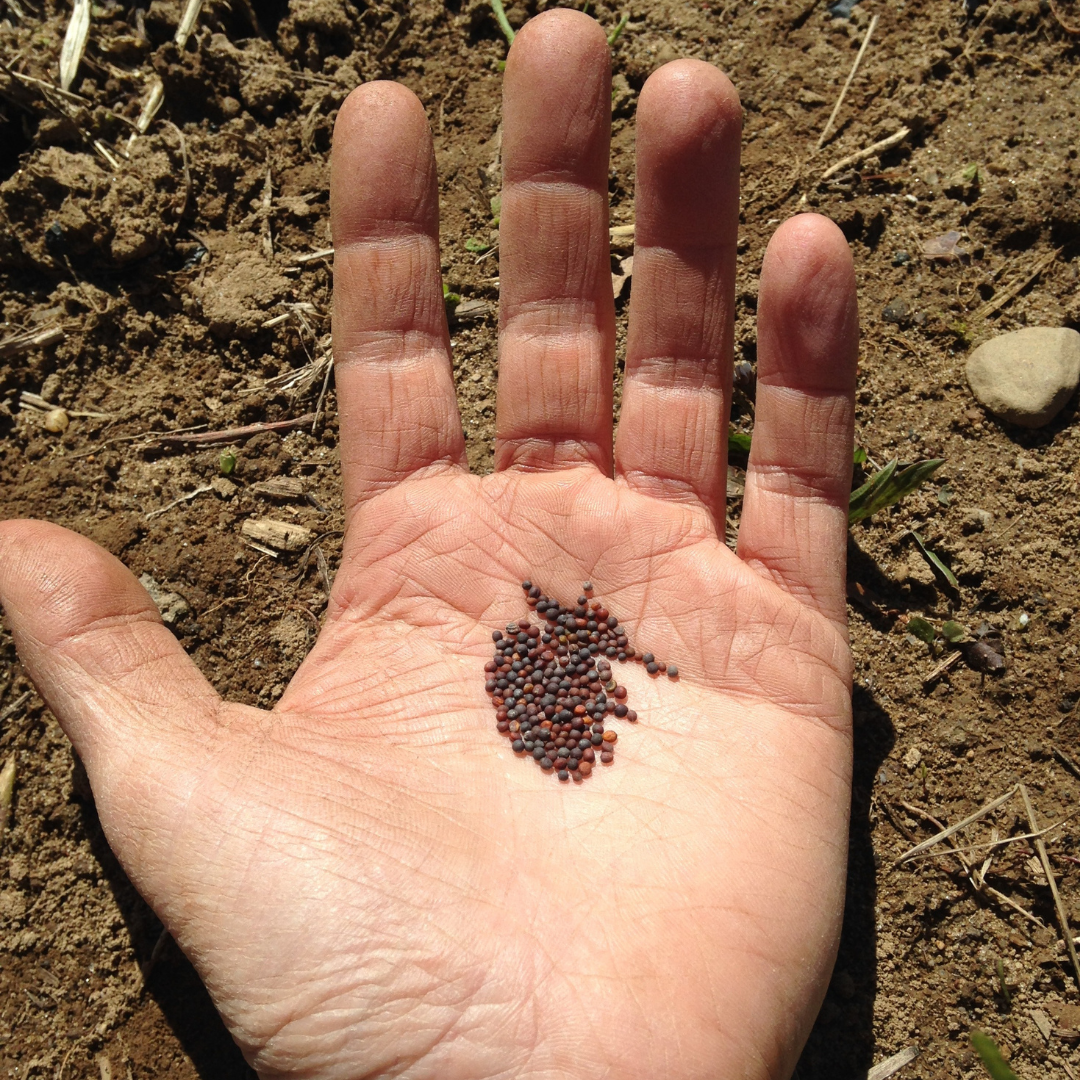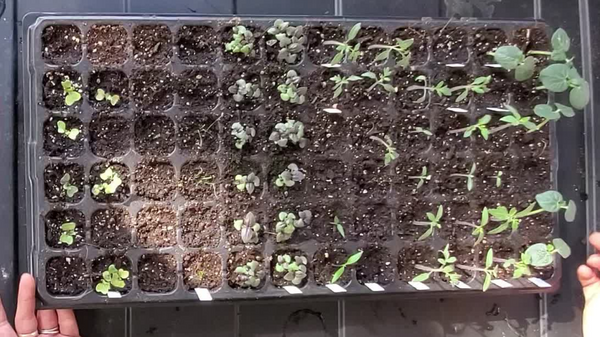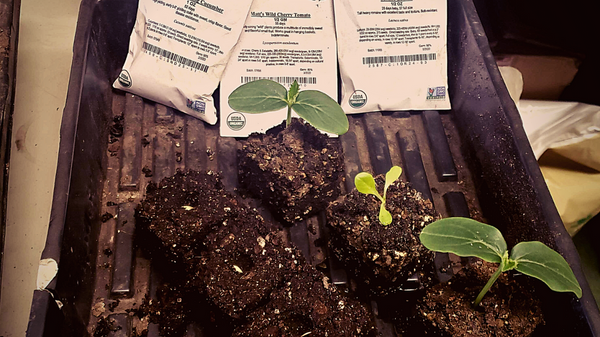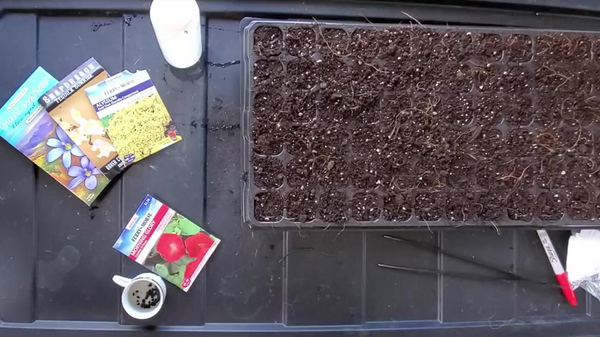
Starting Seeds
Starting seeds at home can be a rewarding experience. There is nothing quite like watching a seed absorbing water, sprouting through its shell and extending roots downward. For this to occur all seeds need the same ingredients - soil, water, and light. The more you can mimic a seed’s natural cycle through these three ingredients, the more success you will have. For experienced growers this is perhaps an oversimplification of what can be a quite complex process, but for now, let’s stick to the basics.

First, soil. Not all potting soils are created equal. Mixes that contain predominantly peat moss tend to dry-out too quickly. Using compost on its own can result in a lack of readily available nutrients to jump-start seedlings. Topsoil can be unpredictable in its nutrients and water holding capabilities. It is best to select a seed starting mix that is well-balanced. This means it has good drainage, but still some water holding capabilities, has quick and slow release nutrients, and has good structure to allow roots to disperse. Tilth Soil’s organic seed starting mix, Sprout has all of the above, and will give your seedlings their best start.
Another important consideration with soil is the temperature. If your soil, not necessarily your air, is not within a seed’s desired range, it will not germinate. For example, peppers require a soil temperature between 70-80*, but lettuce only 60-75*. Generally seeds will not germinate well in soils below 55* and above 90*. This same principle applies when seeding directly into a garden bed as well. (Vegetable Seed Germination Temperatures is a great resource). Heating mats or germination chambers are a great way to ensure proper soil temperature and successful germination.

Next, water. Seeds need to be moist, not wet in order to germinate. When seeds are too wet they can rot, if they are too dry, they will sit dormant. Moist seeds/soil will produce the most desirable results by finding a happy medium. Wet soils tend to drip or are sitting in puddled water. Dry soils tend to be cracked or light brown on the surface. Moist soils like a daily misting and/or a dome on top of them to maintain moisture. If there is mold or algae growth, you likely need to ease-up on watering and increase airflow. Seedlings with a bit of movement at all times is a sign of proper air circulation.
Third, light. Some seeds require light to germinate, others do not. This is valuable information that should be present on your seed packet or in your seed catalog. However, ALL seeds need light once they have germinated. You may have enough light if you have an open south facing window or greenhouse. If you notice plants getting pale or leggy (long and reaching) you will need to provide supplemental light in the form of a wide or full spectrum bulb that can be purchased at most growing supply stores.

Not often discussed in a conversation about seed starting is seed selection. Despite choosing the right soil, finding a moisture balance, and getting light just right you may still have issues. This can be in large part to the seeds themselves. Seeds are living things. If they are not stored properly or too much time has passed, they may no longer be viable. When selecting which seeds to grow, the catalog or packet should say the germination percentage, light requirements, and days to maturity. Avoid seeds whose sources do not present this information. Also keep an eye out for varieties deemed easy to grow. Look for seeds in your grow zone, and only select items you will actually eat or use. It is best to avoid “giants” or really specialized/unique seeds as these require nuanced growing techniques that may result in disappointing germination or sprouting.

Lastly, look at a calendar. Quality seeds will state their days to maturity (time from seeding or transplant to harvest). Use this number to count backwards from your first frost free date - again, grow zones. You can assume you will start seeds at least 2-3 weeks prior to that frost free date, but some seeds like peppers and onions you can start 8 weeks in advance of that date. Know that some items may need to be potted-up (moved into a larger container) before planting outside, which will require more space, more light, and more soil.
While starting seeds from home can be a delight, it isn’t the best option for everyone. Seed starting can be nuanced, require supplies and space that may not be available to you, and is a learning experience where lots of mistakes can happen. There are likely professional growers in your area that sell plant starts and even larger plant sales that could supply all your needs. The difference in cents per seed to dollars per transplant might be well-worth not having to start seeds on your own, especially if you only want one or two plants and are now left with a seed packet with a limited shelf life. Local growers are your best source for quality plants. Grocery stores and home improvement stores typically source their starts from the west-coast, truck them around the country, and are maintained by minimally trained staff. If you decide not to start your own seeds please support a local grower by purchasing your transplants from them. Here are a handful to check out!
Want to learn more? Check out our Starting from Seed Workshop with Emily from Frayed Knot Farm.
